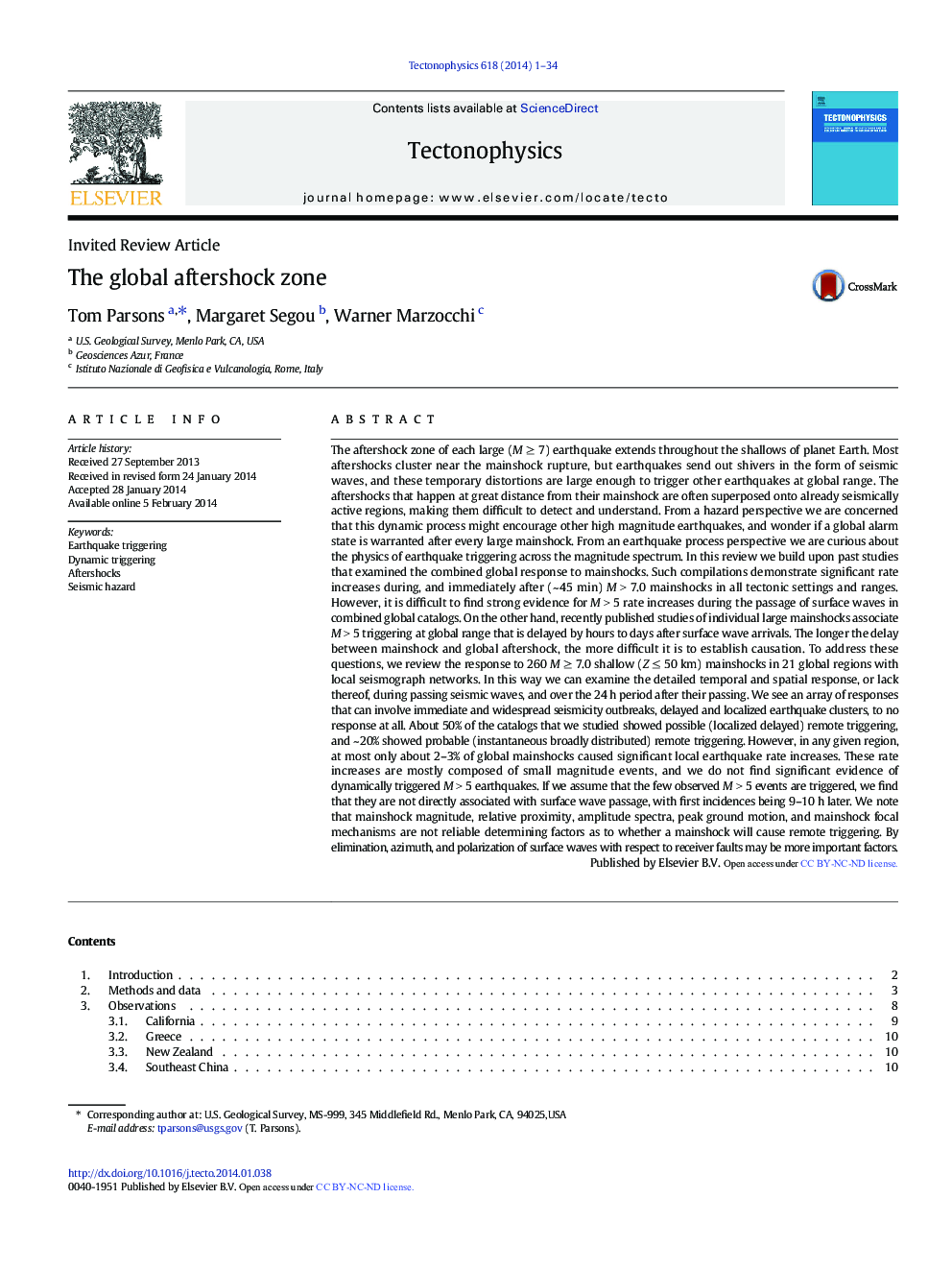| کد مقاله | کد نشریه | سال انتشار | مقاله انگلیسی | نسخه تمام متن |
|---|---|---|---|---|
| 6433877 | 1636771 | 2014 | 34 صفحه PDF | دانلود رایگان |
- Mainshocks are observed to trigger earthquakes across global distances.
- We review earthquake catalogs from numerous regions to look for remote triggering.
- Responses range from obvious outbreaks of seismicity to isolated events.
- Higher magnitude triggered earthquakes are rare.
- Only about 2-3% of global mainshocks cause remote triggering in a given region.
The aftershock zone of each large (M â¥Â 7) earthquake extends throughout the shallows of planet Earth. Most aftershocks cluster near the mainshock rupture, but earthquakes send out shivers in the form of seismic waves, and these temporary distortions are large enough to trigger other earthquakes at global range. The aftershocks that happen at great distance from their mainshock are often superposed onto already seismically active regions, making them difficult to detect and understand. From a hazard perspective we are concerned that this dynamic process might encourage other high magnitude earthquakes, and wonder if a global alarm state is warranted after every large mainshock. From an earthquake process perspective we are curious about the physics of earthquake triggering across the magnitude spectrum. In this review we build upon past studies that examined the combined global response to mainshocks. Such compilations demonstrate significant rate increases during, and immediately after (~ 45 min) M > 7.0 mainshocks in all tectonic settings and ranges. However, it is difficult to find strong evidence for M > 5 rate increases during the passage of surface waves in combined global catalogs. On the other hand, recently published studies of individual large mainshocks associate M > 5 triggering at global range that is delayed by hours to days after surface wave arrivals. The longer the delay between mainshock and global aftershock, the more difficult it is to establish causation. To address these questions, we review the response to 260 M â¥Â 7.0 shallow (Z â¤Â 50 km) mainshocks in 21 global regions with local seismograph networks. In this way we can examine the detailed temporal and spatial response, or lack thereof, during passing seismic waves, and over the 24 h period after their passing. We see an array of responses that can involve immediate and widespread seismicity outbreaks, delayed and localized earthquake clusters, to no response at all. About 50% of the catalogs that we studied showed possible (localized delayed) remote triggering, and ~ 20% showed probable (instantaneous broadly distributed) remote triggering. However, in any given region, at most only about 2-3% of global mainshocks caused significant local earthquake rate increases. These rate increases are mostly composed of small magnitude events, and we do not find significant evidence of dynamically triggered M > 5 earthquakes. If we assume that the few observed M > 5 events are triggered, we find that they are not directly associated with surface wave passage, with first incidences being 9-10 h later. We note that mainshock magnitude, relative proximity, amplitude spectra, peak ground motion, and mainshock focal mechanisms are not reliable determining factors as to whether a mainshock will cause remote triggering. By elimination, azimuth, and polarization of surface waves with respect to receiver faults may be more important factors.
Journal: Tectonophysics - Volume 618, 31 March 2014, Pages 1-34
